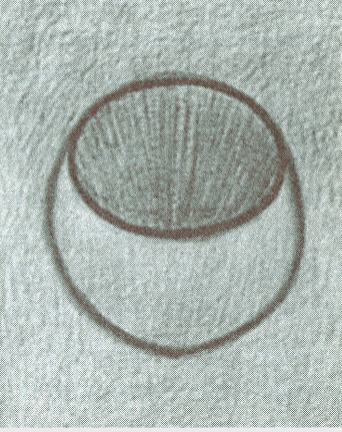A few days before my family and I were leaving Japan in 1968 after a six-year sojourn, my friend from California came to visit and gave us three grapefruits from a carton that he had brought with him. Because of import restrictions, fruits from abroad, such as grapefruits, melons, and grapes, were a rarity and hence ridiculously expensive. A single grapefruit, for example, would cost several thousand yen, equivalent to twenty dollars at the exchange rate at that time. People bought these exotic, imported fruits primarily to give away as gifts on special occasions.

Since we were returning to California shortly, where grapefruits are in abundance, we decided to give away the three grapefruits. It so happened to be the day that my wife went to her weekly flower-arranging class, so she gave the grapefruits to her teacher. We thought nothing about it, but a couple of days later we received a special delivery letter from the teacher. Written with a brush on traditional Japanese paper and folded carefully, the letter had to be something special. People today use ballpoint pens to dash off missives.
The teacher’s letter began with very formal words about the weather, then she expressed appreciation for the three grapefruits. She wrote that she shared the first grapefruit with her grandchildren, who were thrilled with the fragrance and taste of an exotic fruit that they had never seen before. The second grapefruit she peeled and ate together with an old friend whom she hadn’t seen for over twenty years, making the reunion a very special event. The third grapefruit she took to a hospital, where her best friend was dying of a terminal illness. She hadn’t eaten for more than a week, but when she saw the grapefruit she wanted to try tasting just a little piece. When she finished the first morsel, she asked for one, then another one, until she ate half the grapefruit. The family members watching all this were in tears, happy that their loved one was enjoying something to eat.
The teacher thanked us profusely from the bottom of her heart for the three grapefruits. My first reaction on reading the letter was, “Thank the grapefruits!” But I also reflected on what Hua-yen Buddhism [a school of Chinese Buddhism based on the Flower Garland Sutra] says about a small act of giving that has repercussions in an interdependent and interconnected world. According to this tradition, one small act of charity (dana paramita) is said to be equal to countless acts of charity. No one can measure the effects of a single act of giving, for its repercussions are beyond our limited imagination.
The grandchildren will always remember the sweet aroma and taste of their first grapefruit, overlapping with the loving image of their grandmother, even after she is long gone. The two women’s reminiscence about the past was made all the more memorable with each bite of grapefruit, the good feeling emanating and embracing those around them. The dying friend will live forever in the hearts and minds of her loved ones as she enjoyed each morsel of grapefruit. The letter from the flower-arranging teacher reminds me of the possible relevance of Hua-yen Buddhism for the contemporary world.
In reflecting on dana paramita, however, I am reminded that it requires “three kinds of purity.” That is, according to Buddhism, true giving involves the awareness that there is no giver, no gift, and no receiver. Attachments of any kind—whether it be to self as the benefactor, the value of the gift, or the acknowledgment by the receiver—nullify the pure act of giving. In our case we had no attachments, not because we were selfless but simply because we didn’t pay for the grapefruits and merely passed them on to the teacher. This might be considered true giving, but it was a fortuitous act and had nothing to do with dana paramita as an act of selfless giving, free of self-interest, which leads to the other shore of enlightenment.
In fact, the true act of dana paramita involves giving up what we cherish the most—ultimately our ego self. I know a school teacher who encourages the practice of dana in children by setting an example. Once, he took his students to give fruits to the homeless. In doing so, he purchased the most expensive fruits at the grocery store. When one mother complained that the homeless did not deserve such extravagance, he explained two important things about true giving. First, it requires some sacrifice on the part of the giver. To give away something that one doesn’t need is not dana. Second, the act must not be condescending but must show respect to the one who receives the gift. In fact, one is grateful to the recipient who makes the act of giving possible.
Although dana paramita in the true sense is our goal, it is not easy to actually practice it. But, as in the case of our three grapefruits, even if giving does not come from our hearts, we want to return something to the world. When such a practice is repeated as often as possible, we may come to realize that just to be alive is a gift, a gift made possible by countless good causes and conditions. Whether we know it or not, every act of compassion, real or simulated, may have a positive significance far beyond our powers of imagination.
♦
From Shin Buddhism: Bits of Rubble Turn Into Gold, © 2002 by Taitetsu Unno. Reprinted with permission of Doubleday, a division of Random House, Inc.
Part of Summer 2003’s Special Section on Dana: The Practice of Giving.
Thank you for subscribing to Tricycle! As a nonprofit, we depend on readers like you to keep Buddhist teachings and practices widely available.
